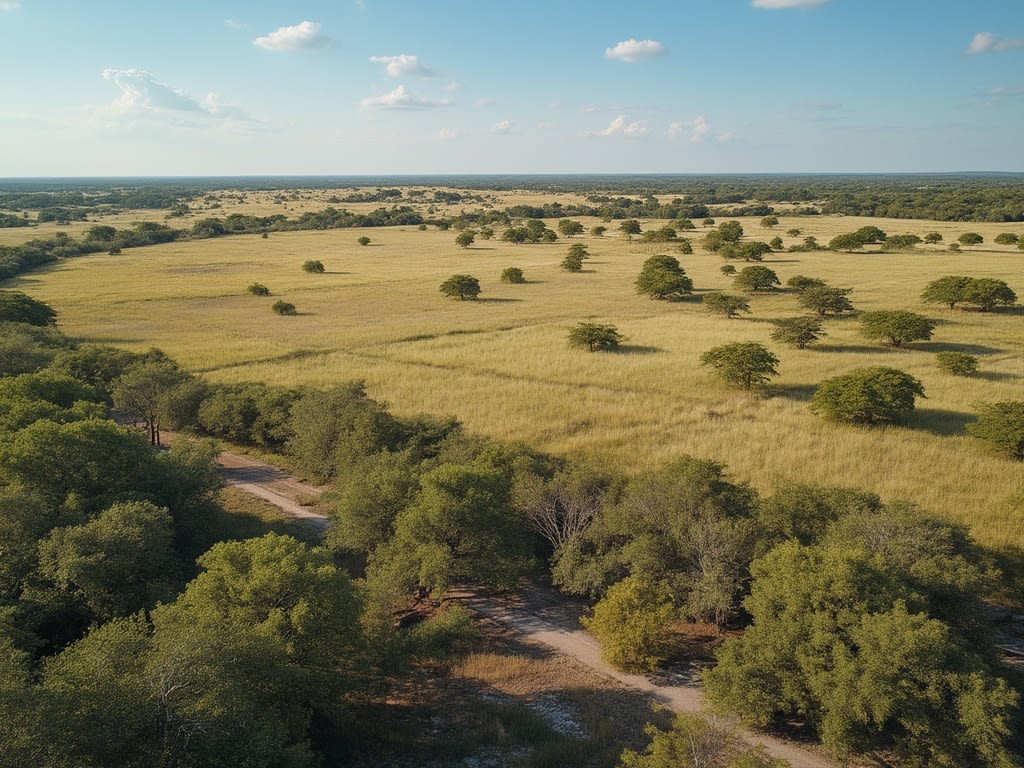The Texas property values surged 22% between 2021 and 2022, fueled by expansion in both residential and commercial markets. A thriving economy marked by a 3.5% unemployment rate, coupled with rapid population gains exceeding 470,000 new residents in 2023, has made Texas land development opportunities highly desirable for developers seeking investment potential.
Key Takeaways:
- Strategic placement near highways, business districts, and core services drives substantial value for developers
- Mixed-use and flexible zoning options boost property valuations and generate increased developer attention
- Smart developers calculate property values at 60-70% of completed project worth to ensure profitable returns
- Site characteristics including land slope, soil composition, and utility connections impact development expenses and overall value
- Current market dynamics, featuring 95% multi-family occupancy and 15% growth in industrial space demand, position Texas as a prime development target
Understanding Property Value for Developers in Texas
Current Market Dynamics
Texas properties have seen substantial growth, with values jumping 22% from 2021 to 2022. The surge stems from both residential and commercial sectors, making properties increasingly attractive to developers. Population spikes and strong economic sectors fuel this expansion.
Value-Driving Factors
I’ve identified several key elements that shape a property’s worth to developers:
- Location relative to major highways, schools, and employment centers
- Lot size and zoning regulations
- Current market demand in specific neighborhoods
- Infrastructure availability, including utilities and drainage
- Future development plans in surrounding areas
- Building restrictions or deed limitations
- Environmental factors affecting construction
These factors combine with Texas’s steady economic growth and business-friendly climate to determine your property’s development potential. A developer’s offer will reflect their ability to maximize these elements while meeting current market demands.

Market Conditions and Economic Impact
Key Economic Factors in Texas Property Values
Texas commercial property values directly respond to current market forces. Interest rates sitting at 6.8% have slowed some investment activity, but strong population growth continues driving demand. Local economic indicators paint a clear picture: a 3.5% unemployment rate and 4.1% inflation rate position Texas as a prime investment market.
Here’s what’s shaping property values right now:
- Population growth of 470,708 people in 2023 increases demand for commercial spaces
- Median property values rose 8.2% in major Texas metros
- Office space demand dropped 12% while industrial demand grew 15%
- Multi-family properties maintain 95% occupancy rates
- Development costs increased 7.3% year-over-year
The next 12 months predict continued growth in property values, particularly in industrial and multi-family sectors. Limited land availability near urban cores makes existing properties more valuable to developers looking to capitalize on Texas’s expanding economy.

Location and Infrastructure Advantages
Commercial and Transportation Access
Your property’s location near commercial districts directly impacts its appeal to developers. Properties within 1-2 miles of industrial zones or business parks typically command higher valuations. Access to major highways and thoroughfares strengthens your position – developers prize sites with multiple entry points and clear paths to business centers.
Community Features and Growth Potential
Key amenities boost developer interest in your property. I’ve identified these critical factors that influence property value:
- Distance to essential services like hospitals, schools, and retail centers
- Access to public transit stops and major road networks
- Current population density in surrounding neighborhoods
- Local government investment in infrastructure improvements
- Proximity to Houston’s energy corridor and tech hubs
A property’s connection to Houston’s economic drivers matters significantly. The city’s position as an energy and manufacturing powerhouse means properties near these sectors often receive premium offers. The presence of public transport options within walking distance can increase developer interest by 15-20%. Properties located in areas marked for public infrastructure improvements tend to attract more competitive bids as developers tend to pay more as they anticipate future value growth.
If your property sits near multiple amenities and has strong transport links, you’re in a solid position to negotiate with developers. Consider highlighting these advantages when marketing your property.
Legal and Regulatory Considerations
Texas property development rules shape how developers value land. Local zoning laws set specific limits on building types, heights, and density – directly affecting what can be built on your property. For instance, a residential-only zone prevents commercial development, while mixed-use zones boost potential value by allowing both.
Key Development Regulations
Before selling your property, consider these essential factors that affect developer interest:
- Property rights status – mineral rights, water rights, and easements impact development potential
- Environmental restrictions – protected habitats, wetlands, or flood zones limit buildable areas
- Building codes – height restrictions, setback requirements, and parking minimums
- Utility access requirements – water, sewage, and electrical infrastructure needs
- Density allowances – maximum units per acre for residential developments
- Land use categories – commercial, residential, industrial, or agricultural designations
- Historical preservation rules – restrictions on modifying or demolishing existing structures
Property near major Texas cities often faces stricter regulations but can command higher prices due to increased demand. Multiple-use zoning particularly adds value, letting developers create mixed residential and commercial projects. If your property sits in an area with flexible zoning and minimal environmental restrictions, it’ll likely attract more developer interest and higher offers.

Property Characteristics and Development Potential
Physical Assessment Factors
Your land’s size and shape directly affect its value to developers. Flat terrain costs less to build on, while slopes need additional engineering and site work. I recommend considering these key elements that shape your property’s worth:
- Total square footage and street frontage measurements
- Soil quality and drainage patterns
- Natural features like trees or water bodies
- Access to roads and utilities
- Current structures’ condition and removal costs
- Local zoning restrictions and building codes
- Market demand for different property uses
The property’s current state matters less than its future possibilities. A developer will factor in demolition, land clearing, and site preparation costs. They’ll also analyze if the location supports their target market’s needs. Some features that might seem challenging, like an old structure, often don’t significantly impact the final offer since most developers plan to start fresh.
Valuation Methods and Developer Considerations
Property Value Assessment Techniques
Property developers look beyond standard market values to determine a property’s true development potential. The cost approach method calculates value by adding land costs to estimated construction expenses, minus depreciation. I factor in entrepreneurial profit margins, which typically range from 15-25% depending on project scope and location.
Development Process and Risk Factors
The development journey involves several critical steps that affect property value. Here are the key phases developers analyze when selling your land to a developer and assessing property worth:
- Land acquisition and due diligence costs
- Local zoning and planning requirements
- Utility infrastructure needs and expenses
- Construction timeline and material costs
- Marketing and sales projections
- Environmental impact studies
- Municipal approval processes
Each phase carries specific risks that developers must account for in their valuation. Different buyer types approach these risks distinctly – landowners focus on immediate returns, while investors might accept lower initial profits for long-term appreciation potential. Developers often value properties at 60-70% of the finished project value to maintain profit margins and account for unexpected challenges.
Risk assessment plays a central role in determining your property’s worth. I consider market conditions, location attributes, and development restrictions. Properties with clear titles, favorable zoning, and existing infrastructure command premium prices. High-growth areas or properties near major developments typically attract stronger valuations due to their reduced risk profile.

